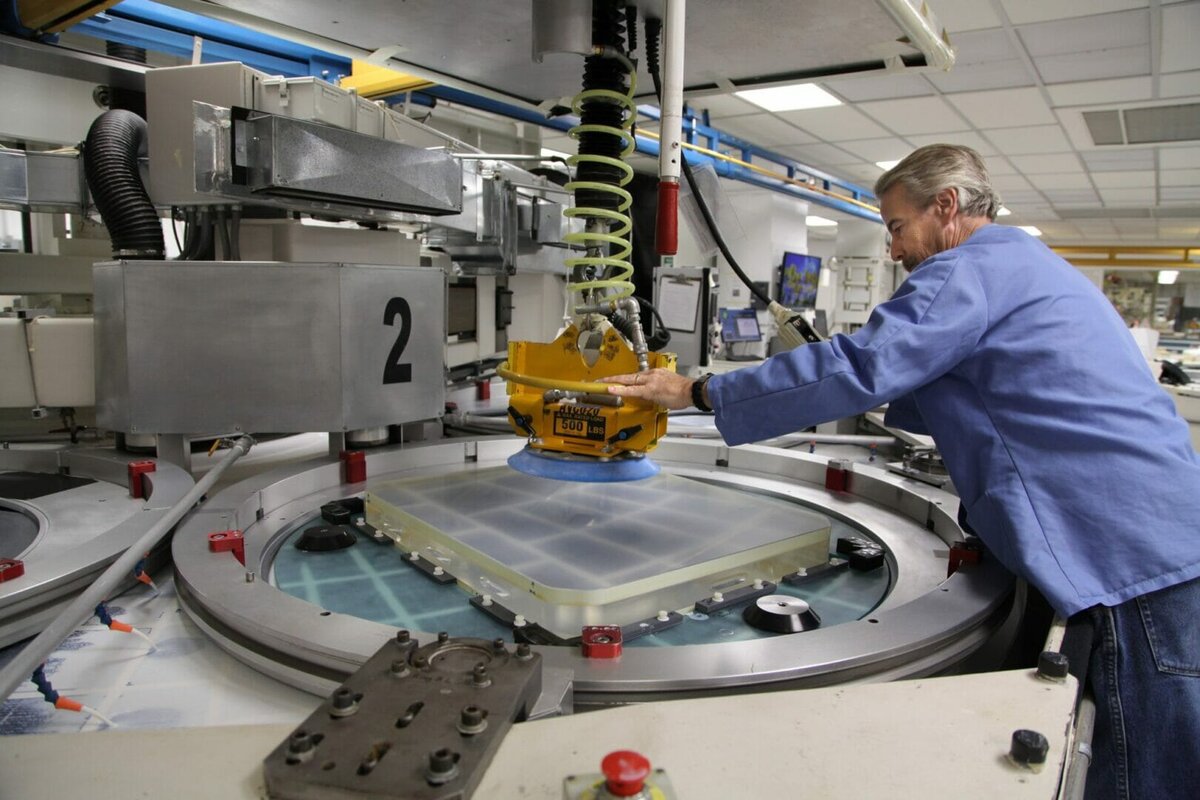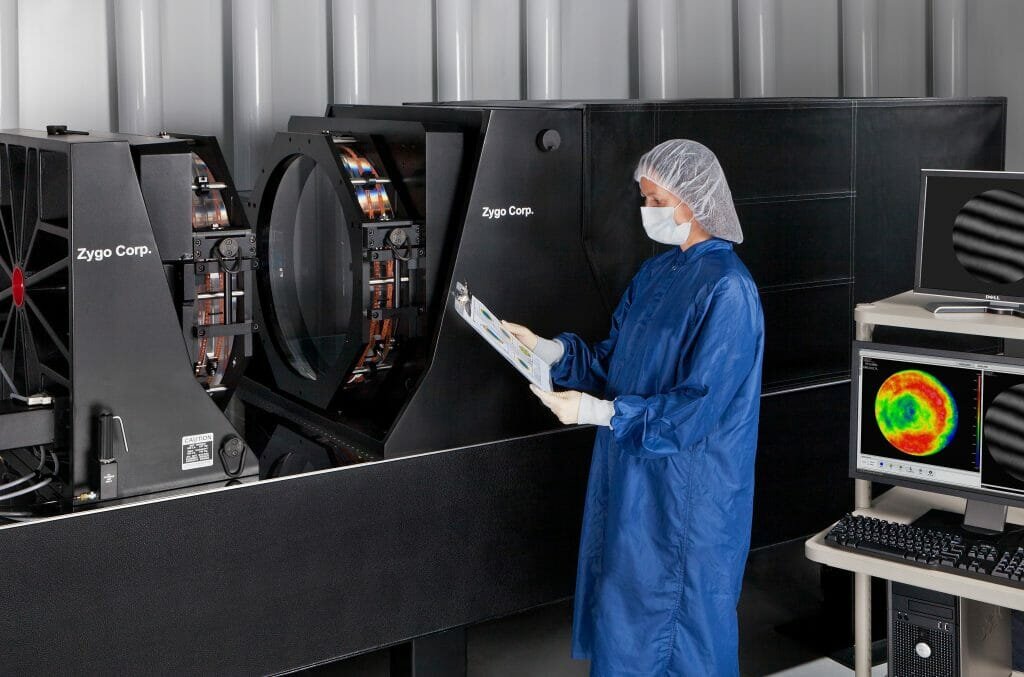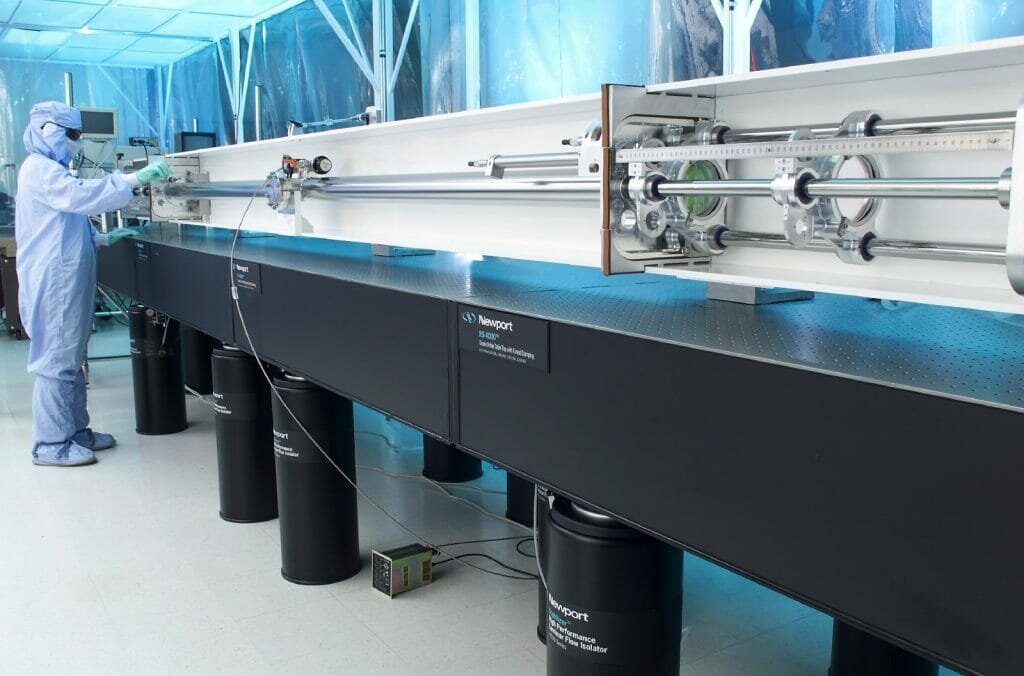Michael Albrecht, Optics Product Line Director, Zygo Corporation
Risk mitigation is vital when procuring optics for use in critical applications such as defense, aerospace, semiconductors, research, and life/health sciences. Risks are events that impact cost, schedule, and technical performance. Here we will examine four key capabilities to look for in optical coating suppliers that will minimize program risks.
VERTICAL INTEGRATION
Timeline and Transportation. The fabrication, coating, testing, and assembly of optics by a single manufacturer provides many benefits — an overall reduction in project completion time being the most obvious.
A single supplier takes full responsibility for completion of a project by coordinating all product development activities. This eliminates the time and expense needed to transport optics to a coating supplier, then back to the originator for final acceptance testing, and then perhaps onto a third supplier for assembly.
Using multiple suppliers for polishing and coating lead to risks and potential liabilities as it relates to unforeseen damage to the substrate at either supplier or while in transit. Having the fabrication and coating under one roof negates these possibilities.
Technical Performance: Taking Responsibility. When working with multiple suppliers — a risk that is not immediately apparent — determining which supplier is at fault if an optic fails to meet the specifications is a challenge. As an example, consider a high-aspect ratio optic with a demanding surface figure. Did the fabricator fail to meet specifications, or did coating stress distort the optic? Assigning responsibility and taking corrective action is not possible when the root cause of the failure is ambiguous or unknown. Even if one supplier is willing to take responsibility, the substrate will need grinding, polishing, and recoating services from additional suppliers – adding more risk.
Seeking out a vertically integrated, experienced supplier with in-house coating capabilities is extremely important to optimize outcomes. Customers need to know they can rely on a single supplier that possesses the technical expertise to select the most appropriate substrate material and then fabricate, coat, assemble, and perform testing and verification via sophisticated metrology tools on their unique optics.
Keeping it Clean. A high-quality, durable coating design is subject to failure if applied to a substrate that is not properly cleaned. When reviewing potential coating suppliers, it is important to ask about their cleaning processes, facilities, and packaging capabilities. Ideally, facilities should include Class 1000 and Class 100 cleanrooms that are set up to process optics sensitive to Airborne Molecular Contaminants (AMCs).Customers should also assess a supplier’s packaging capabilities for protection of delicate coated optics.
EXPERIENCED IN-HOUSE DESIGN TEAM
Theory vs. Real Life. When designing sophisticated coatings, it is standard practice to model initial designs using various software applications. However, the question must be asked, “will these coatings perform as expected when real-world variables clash with textbook theories?” If a customer’s application requires a high-performance coating, it is important to ask prospective suppliers about their prior experience in applying similar coatings to similar substrates. When coating very large optics, for example, it is critical to understand the supplier’s level of experience in handling, cleaning, and controlling coating uniformity. Understanding the variables involved is key to ensuring the finished product meets or exceeds specifications.
There is typically no substitute for experience when addressing such issues, relying on a supplier’s design team to apply out-of-the-box thinking to solve unique, complex problems. In addition to designing coatings, suppliers should have in-house research and development engineers with the skill set to design and build proprietary fabrication equipment and fixtures for optics. Production staff should also have methods in place to control post-coating figure, surface quality, and uniformity — especially with large or unusually shaped optics.
Environmental and Durability Factors. A custom coating design may be required to meet the environmental and durability specifications of a particular application. The end users of coated optics are typically not interested in the type of deposition technology used to apply a coating onto a substrate. Nevertheless, a strong case can be made that top tier coating suppliers must have multiple deposition technologies at their disposal to balance the needs of a coating’s spectral performance and durability with cost and schedule. Having a variety of deposition technologies available allows the manufacturing processes to be optimized. To provide extra versatility, some suppliers also offer enabling technologies such as ion-assisted deposition and resistive sputtering, in addition to more conventional processes.
It is essential that customers select a coating supplier that has in-house testing capabilities for their environmental and durability requirements. Coating designs are tested using witness samples during the development phase and during production for performance verification. Outsourcing these tests significantly slows down the coating design and production processes and increases costs. Common requests include ISO and military specifications for temperature cycling, humidity, salt fog, adhesion, and abrasion. Choosing a supplier that has the capability to perform all such testing under one roof allows the development of advanced coatings in an efficient and cost-effective manner.
Stress Affects Optics – Not Just Engineers. An optic is at risk for deformation when certain types of coatings are applied. This risk is dependent on the coating materials and layer count, the deposition technique utilized, the substrate material, and the aspect ratio. The stress applied can distort an otherwise perfect substrate so that it will no longer meet transmitted wavefront or flatness requirements. When selecting different suppliers for fabricating and coating an optic, the proprietary coating design is almost never shared with the fabricator. Without that information, the fabricator cannot anticipate and compensate for the stress induced on the optic by the coating. Selecting a single supplier to fabricate and coat an optic allows the engineering and manufacturing teams to share coating design information freely to produce an optic that meets specifications both before and after coating is applied. Always be sure to ask suppliers if they have established techniques for coating stress compensation and whether or not they will verify specifications both before and after coating is applied.
SOPHISTICATED METROLOGY
If You Can’t Measure An Optic, You Can’t Produce It. It is vitally important to understand the metrology capabilities of potential coating suppliers. Coating suppliers must have spectrophotometers available to measure reflectance and transmission at various angles of incidence and polarizations. In order to ensure an optic meets all specifications before and after coating, suppliers must also have interferometric testing equipment on hand. It is especially desirable that the interferometer be large enough to test the optic at full aperture. To ensure accurate results are obtained, customers should ask suppliers if their equipment is in a climate- controlled environment, and whether they have the capability to design appropriate holding fixtures and provide an error budget based on specific testing requirements.
REFURBISHMENT SERVICES
Repolishing and Recoating at One Location. Program risks do not end with the delivery of a new optic or assembly. A leading coating supplier needs to be able to support their optics after they leave a customer’s facility and face the wear and tear of the real world, whether from the battlefield, or after extended use in an ultra-high power laser system. By definition, high-durability coatings cannot simply be chemically stripped and reapplied. Rework requires grinding the substrate to remove the damaged coating and repolishing to meet specifications prior to recoating. Ensuring that the chosen coating supplier has the in-house capabilities to perform all of the required refurbishment steps is extremely important. When working with a coating supplier that does not have a full in-house capability to manufacture substrates, extensive delays typically occur when the substrate requires transportation to different facilities to complete the rework process. Choosing the right coating supplier ensures support is available over the life of your program.







